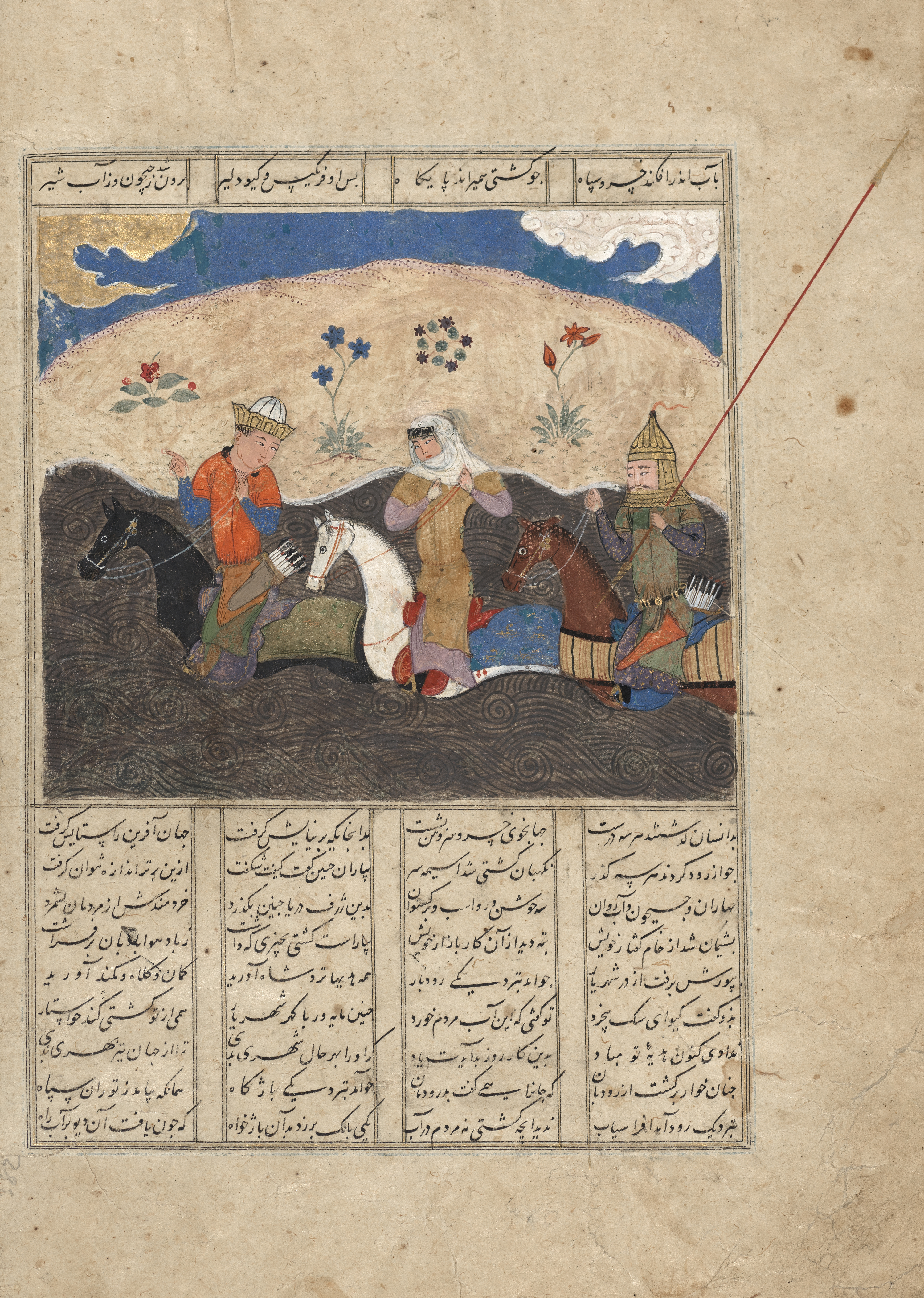
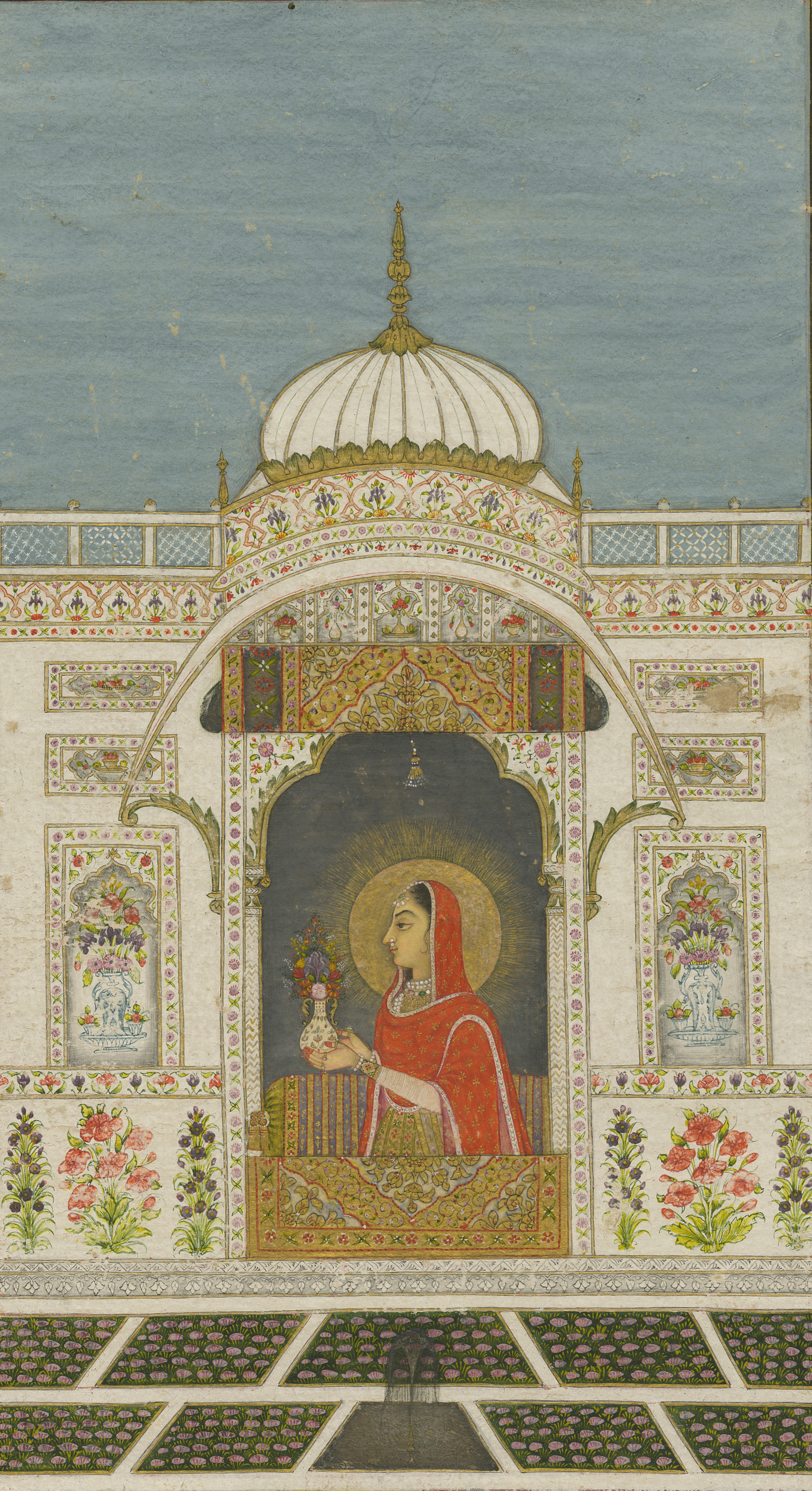
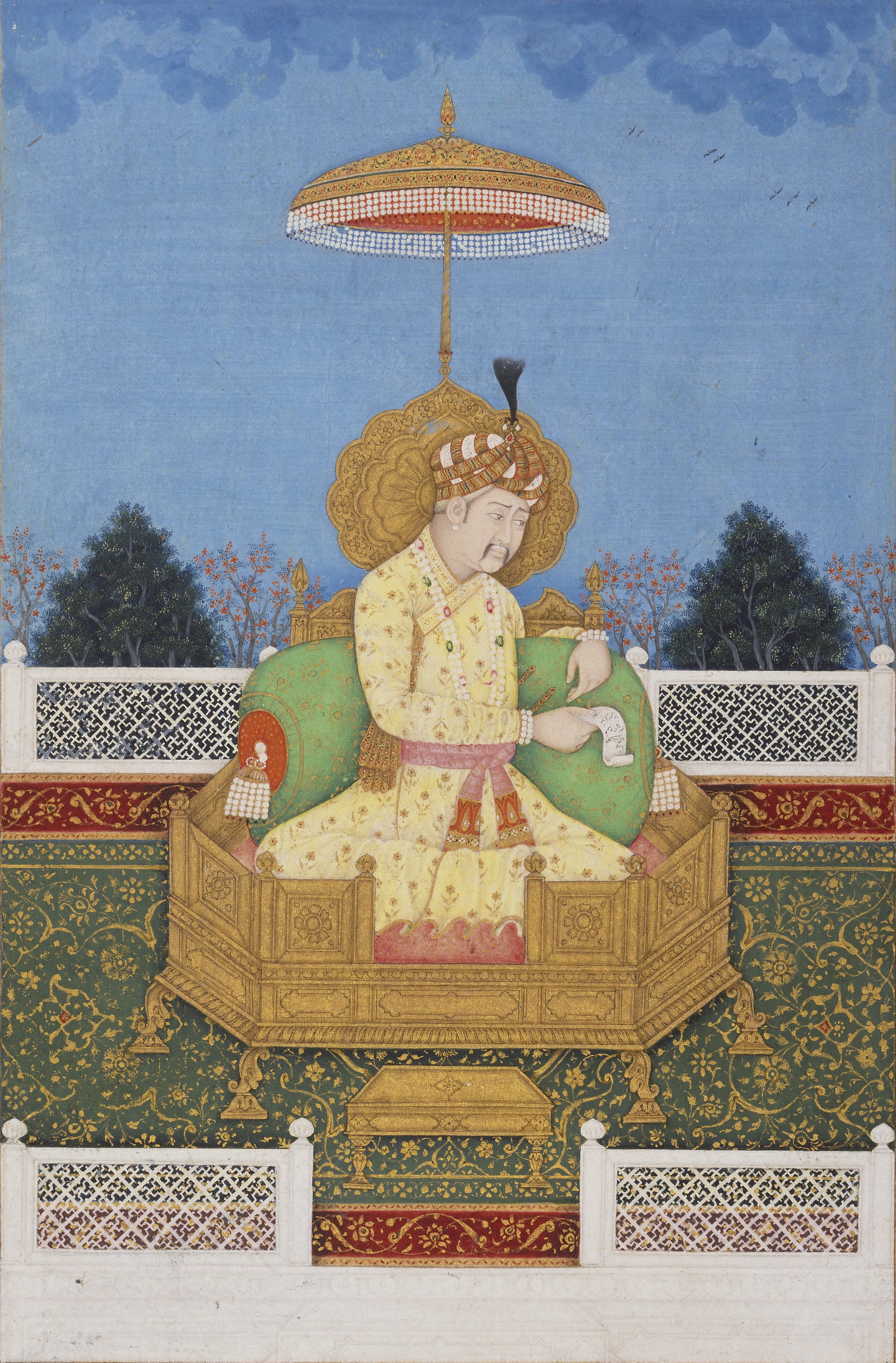
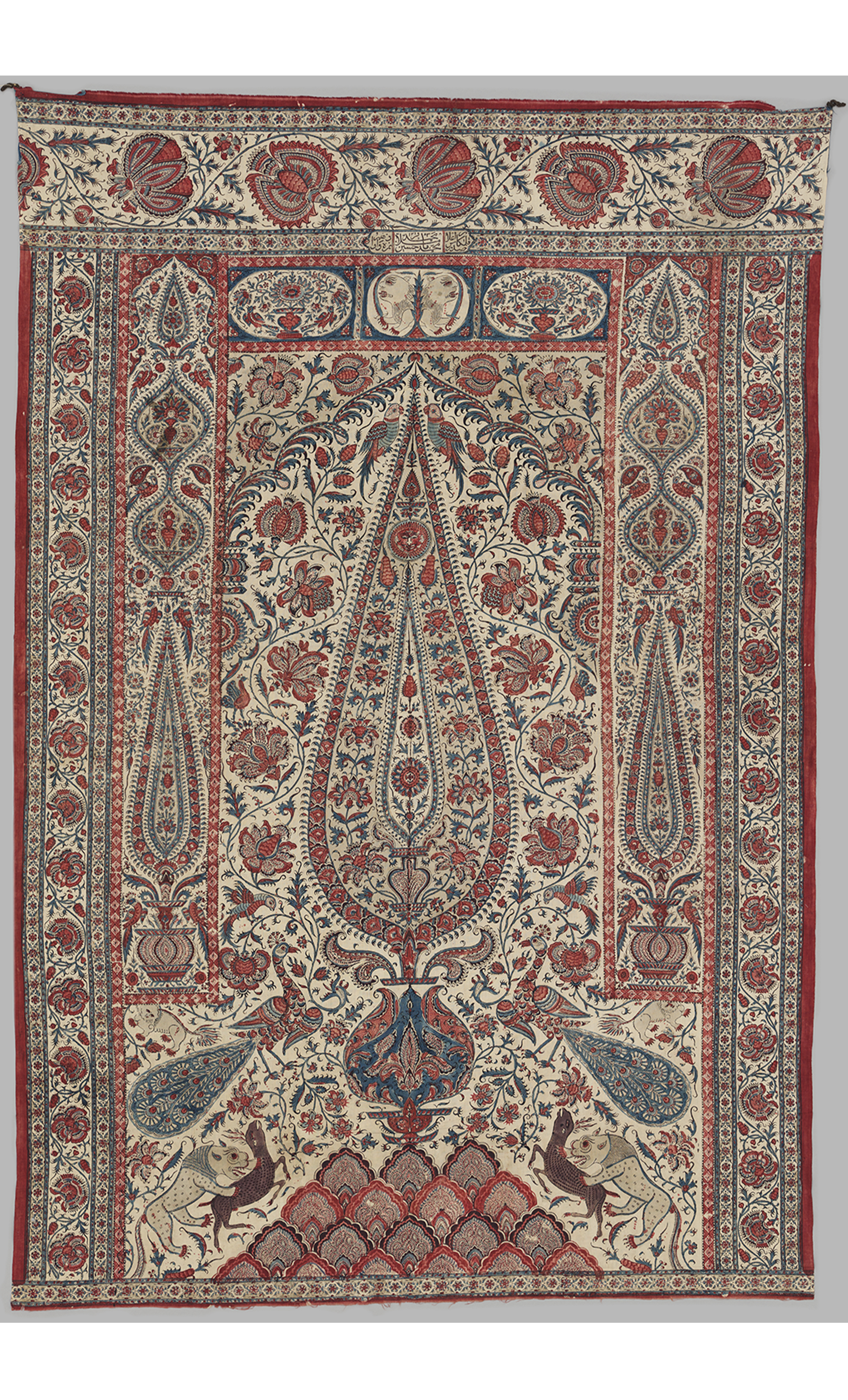
Painting the Persianate World: Portable Images on Paper, Cloth and Clay
This exhibition features thirteenth- to nineteenth-century painted images from Greater Iran and the Indian subcontinent in three mediums: paper, cloth, and clay. The movement of people from today’s Iran and Afghanistan to present-day Pakistan, India, and Bangladesh—and with them the Persian language—formed what has come to be known as the Persianate world. Manuscript illustrations, dye-painted textiles, and decorated ceramics played an important role in binding these regions together. Such highly portable and functional objects visually transported manners of behaving, dressing, and eating, as well as storytelling and image making. This exhibition explores the meanings that painting once carried and the afterlives of painted objects as they entered new collections during the twentieth and twenty-first centuries.
With key works from the collections of the Smith College Museum of Art (SCMA) and other nearby institutions, Painting the Persianate World is the first comprehensive project at SCMA to examine Iranian and Indian art from the perspective of multiple mediums. Objects are organized into three themes—Painting across Mediums; The Persianate World; and Portable Images—ideas that apply to all the works on view.
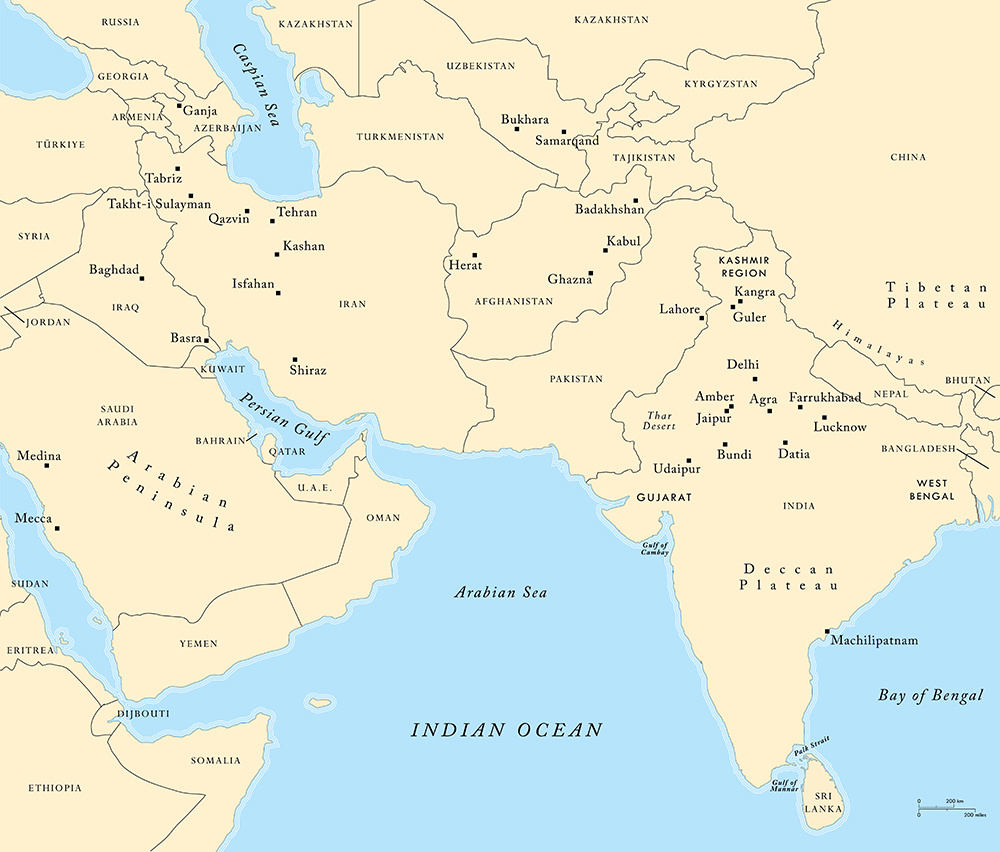
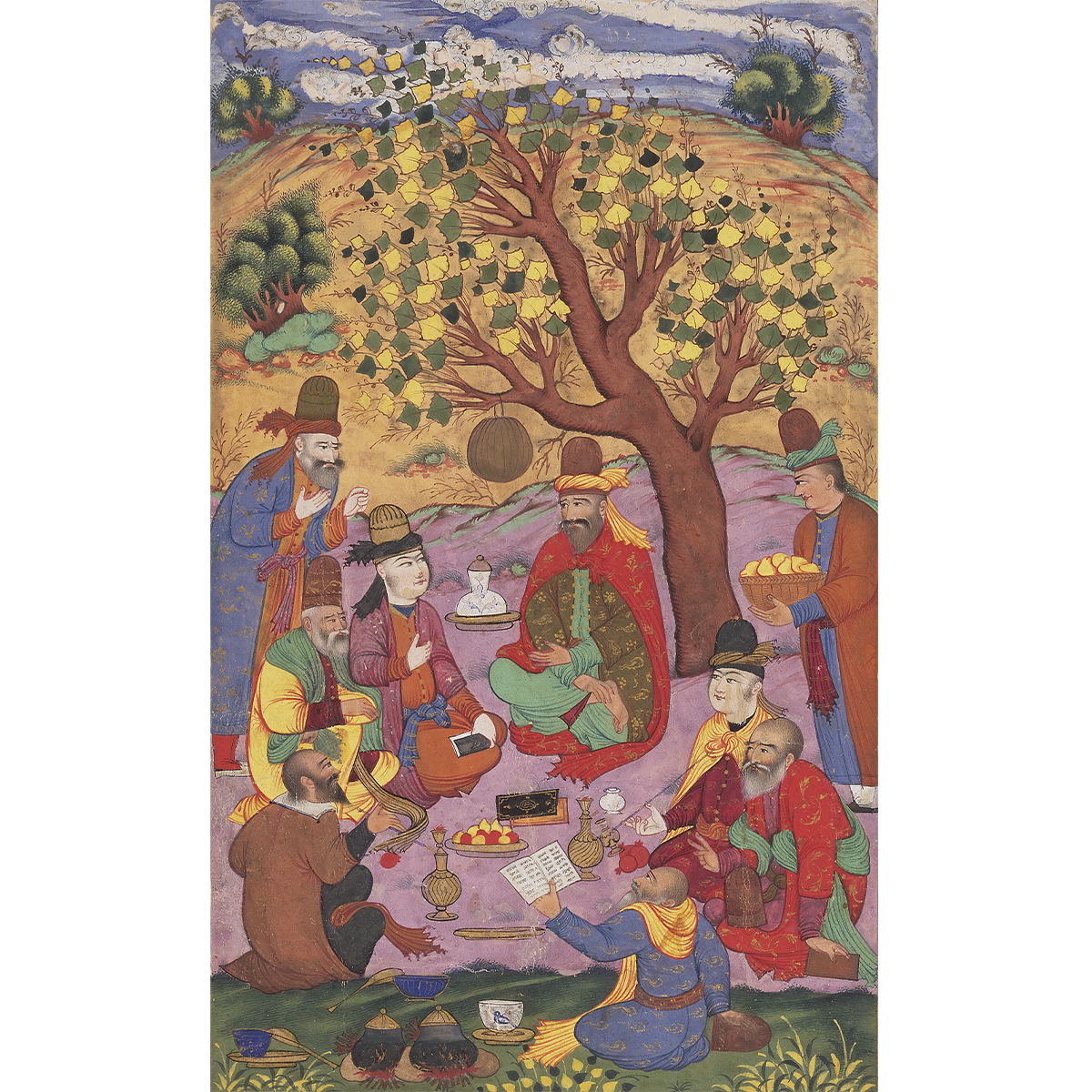
A commonly used word for “painting” in Persian, tasvir also means “forming” and “fashioning.” The broad application of the term underscores one of painting’s key functions, which is to depict—or give form to—images.
The materials that painters employ and the techniques they use help to shape how their pictures look. Painting on paper, for example, involves the use of mineral- and plant-based colors, pigment binders, and fine hair brushes. Painting on textiles, on the other hand, requires the use of plant-based dyes, wax, mordants (chemicals that fix the dye in the fibers), and a bamboo pen (kalam) rolled with cotton cloth. To make images on clay, one uses a brush to paint with colored clays and mineral-based glazes. The painter’s role, no matter their chosen medium, is to form images from these humble and precious substances.
A Gathering of Muslim Mystics (Sufis), illustration from an unidentified dispersed manuscript
Attributed to Muhammad ‘Ali (active 17th century)
Iran, Isfahan, Safavid court, ca. 1640s
Opaque watercolor, ink, and gold on paper
Gift of Mr. and Mrs. Stanley Marcus
SC 1958.119
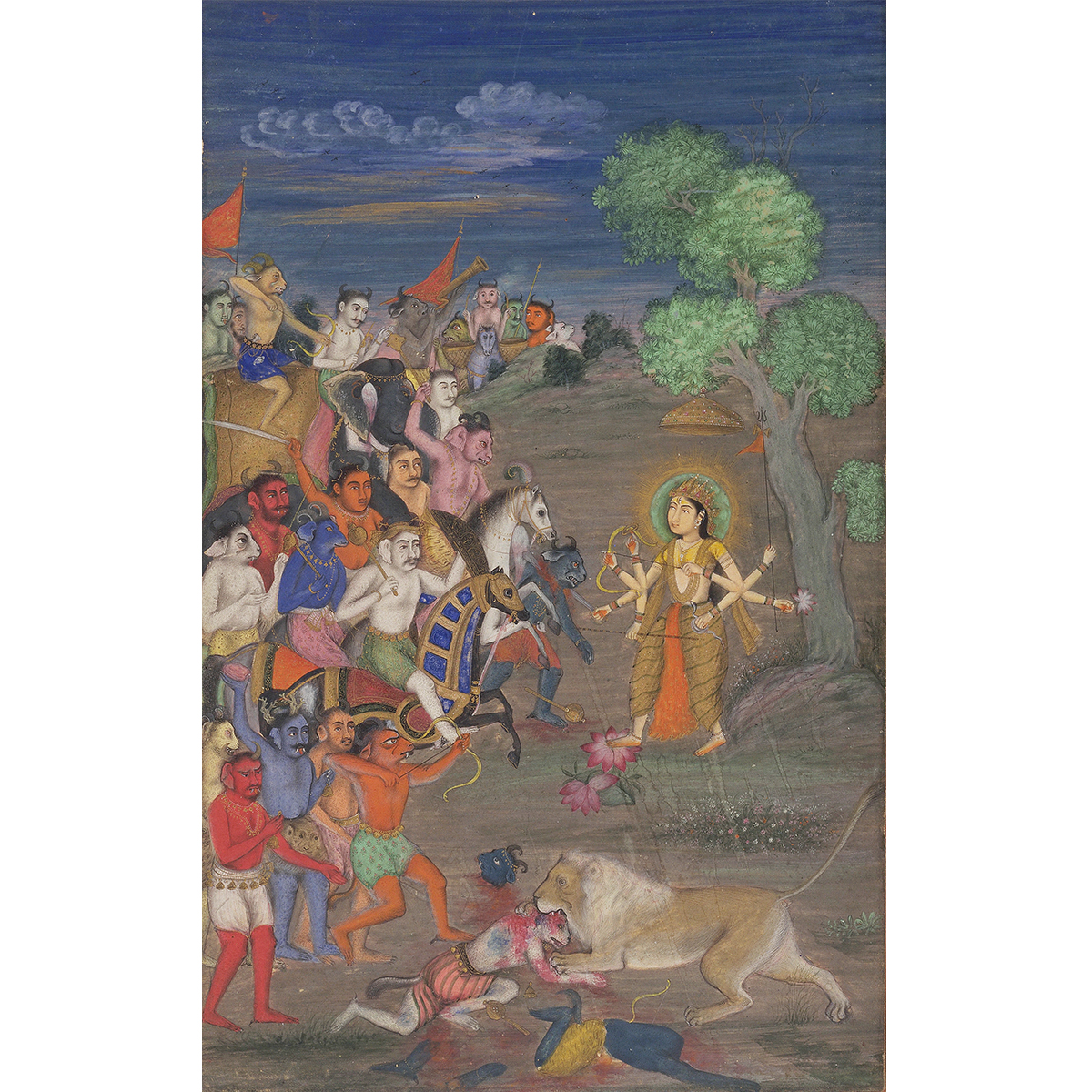
The areas from today’s Iran and Afghanistan to present-day Pakistan, India, and Bangladesh are a perennial crossroads. Between the fourteenth and nineteenth centuries, the migration of people and the use of the Persian language intensified in these regions, forming what has come to be known as the Persianate world. Elites within this vast, cosmopolitan realm shared a taste for certain kinds of stories, elaborate poems, and political thought. Themes such as royal justice and divine love were especially favored. Authors penned texts in Persian but also in other languages—like Braj Bhasha, a precursor to Hindi—that communities in the Persianate world also used. Persianate painters, for their part, drew on a common body of pictorial motifs, compositions, and designs, creating a streamlined visual sphere that bridged religious, linguistic, and cultural divides.
Durga Battling Demons, illustration from an unidentified dispersed manuscript
India, probably Delhi, Mughal court, late 18th or early 19th century
Opaque watercolor and gold on paper
Gift of Mrs. Evan M. Wilson (Leila Fosburgh, class of 1934)
SC 1990.2.25
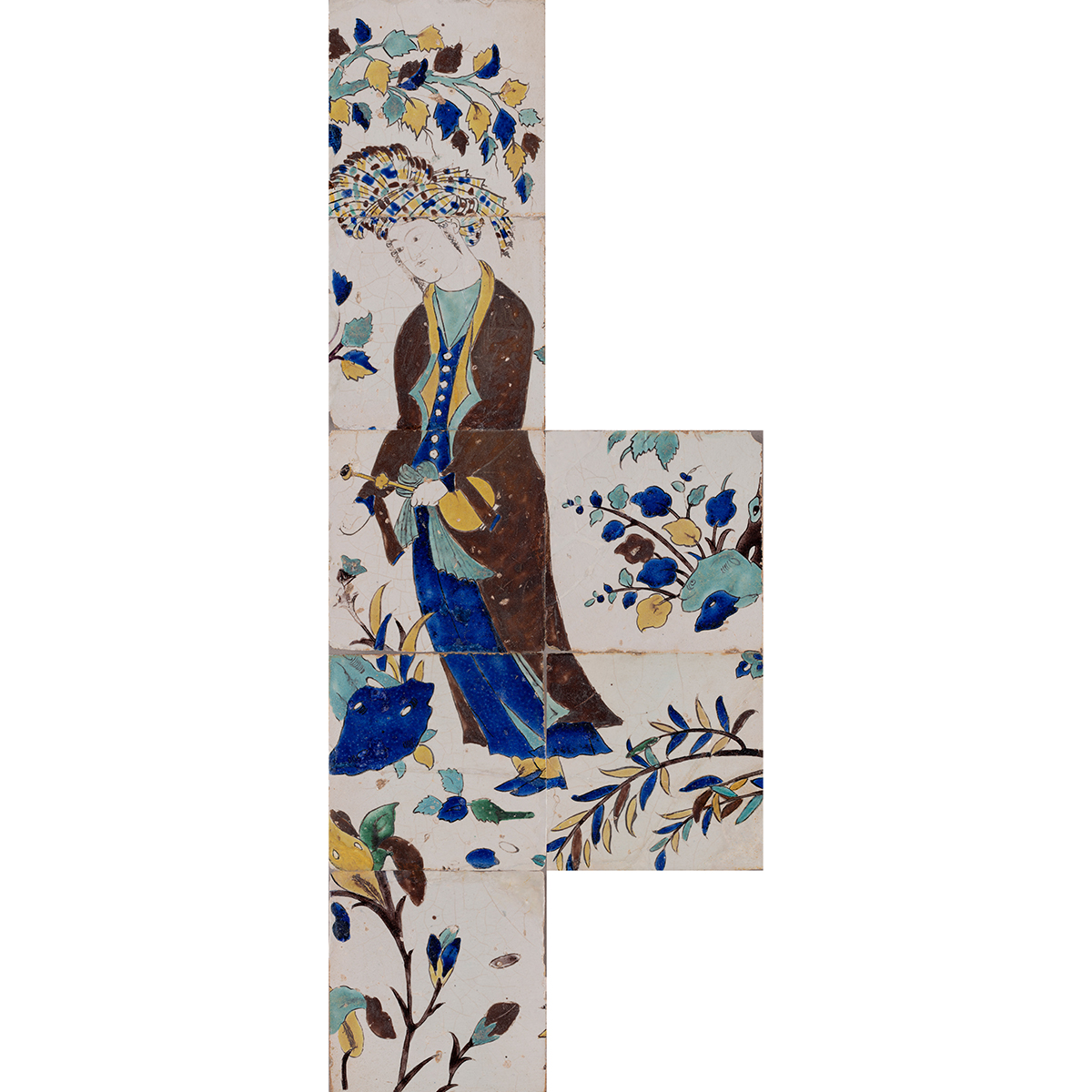
Whether executed on cotton, paper, or clay, all of the painted images on view here were eminently transportable—and travel they did. Some objects were made expressly for export, while others entered into broader circulation as a result of inheritance, gift exchange, or sale. Many exist today in fragmented form—as leaves cut out of books or tiles detached from ceramic friezes—since the European and North American collectors who acquired them during the twentieth century had little interest in their original contexts.
Painters moved readily, too, and carried their expert knowledge of image making across land and water. The use of transparent paper and deer skin allowed them to easily copy and transfer designs. Aided by such materials, artists helped to forge the larger Persianate world of painted images.
Cupbearer (saqi), from a dispersed panel originally on the façade of the Jahan-nama Pavilion
Iran, Isfahan, Safavid court, early 17th century
Stonepaste with paint and polychrome glaze within black wax-resist outlines (cuerda seca technique)
Gift of Jane M. Timken, class of 1964
SC 2021.26
We are deeply indebted to Professor Yael Rice of Amherst College for her expertise that has guided us through this project. Smith College alumna Shreya Dwibedy ’22 and UMass Amherst graduate student Roya Peighambarzadeh have also contributed to the development of this exhibition.
SCMA is grateful to the Amherst College Archives and Special Collections, the Mead Art Museum at Amherst College, the Mount Holyoke College Art Museum, Sean Kelly Gallery, and the Yale University Art Gallery for their generous loans.
This exhibition is supported by the Nolen Endowed Fund for Asian Art Initiatives.